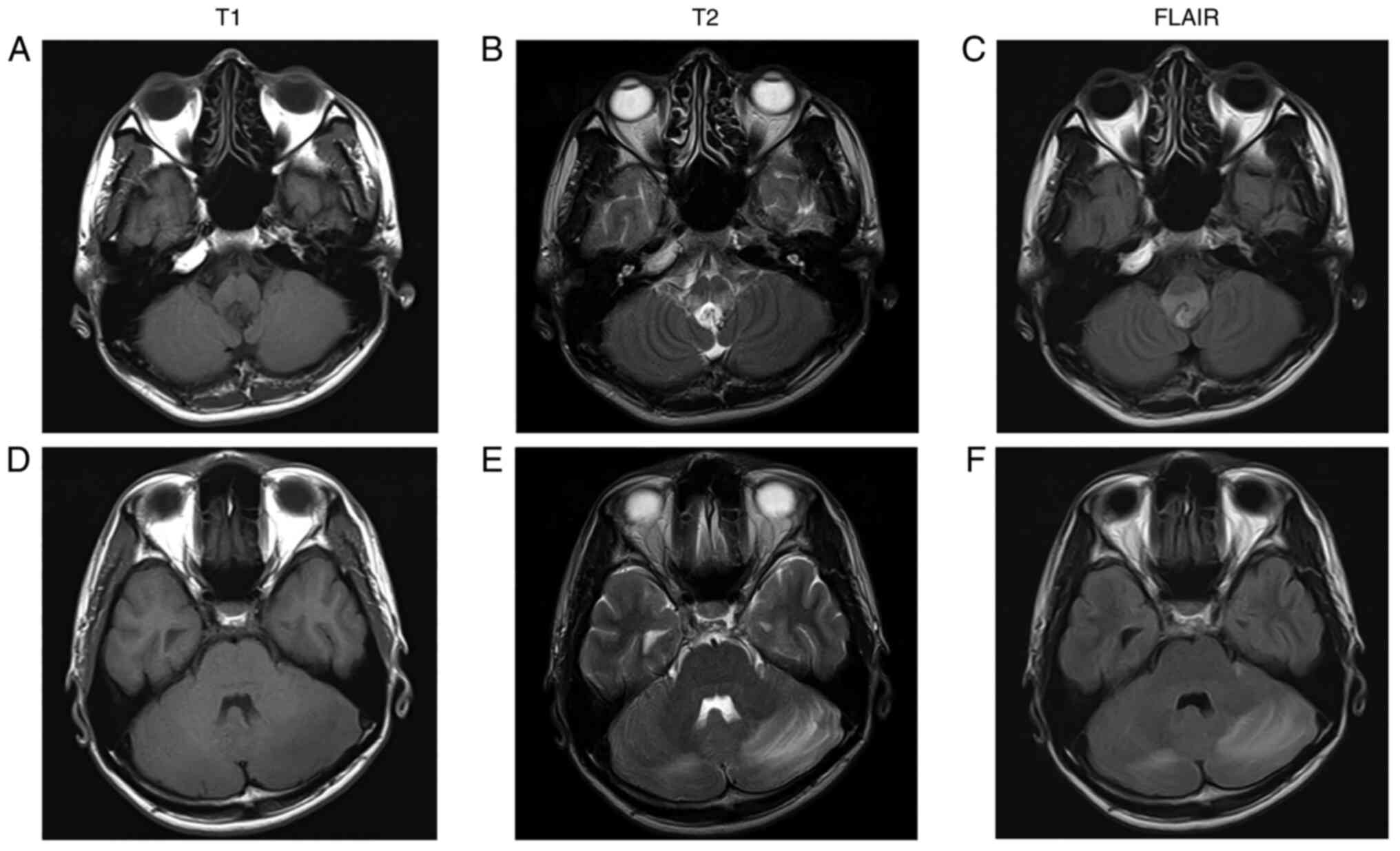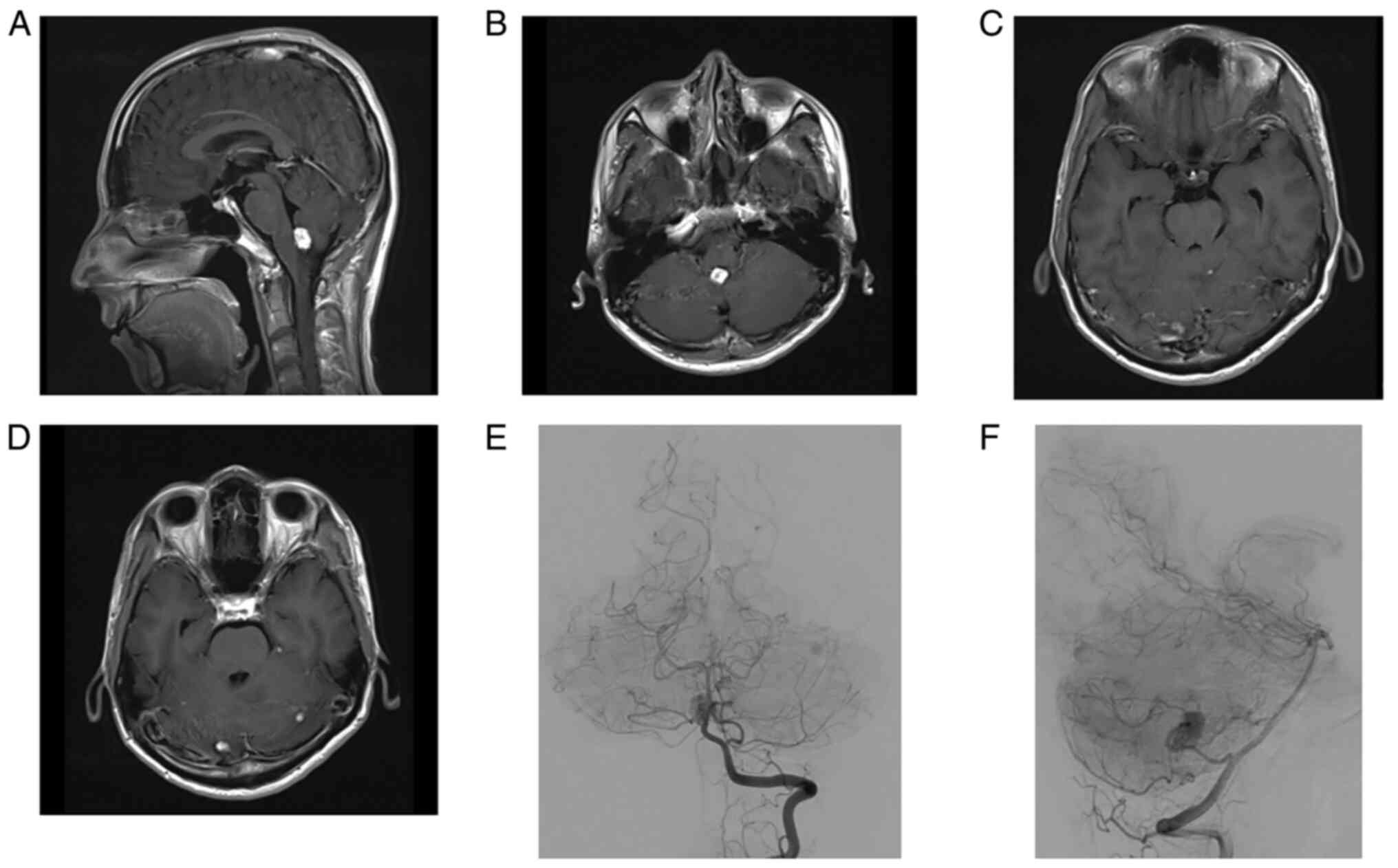Hemangioblastoma of the medulla oblongata that caused isolated fourth ventricle after stereotactic radiosurgery: A case report
- Authors:
- Published online on: March 14, 2023 https://doi.org/10.3892/mco.2023.2633
- Article Number: 37
-
Copyright: © Hama et al. This is an open access article distributed under the terms of Creative Commons Attribution License.
Metrics:
Total
Views: 0 (Spandidos Publications: | PMC Statistics:
)
Total PDF Downloads: 0 (Spandidos Publications: | PMC Statistics:
)
Abstract
Isolated fourth ventricle is a rare complication following shunt insertion of the lateral ventricles for hydrocephalus. The present report describes a rare case of a hemangioblastoma of the medulla oblongata that caused isolated fourth ventricle due to intraventricular deposition of fibrin. A 34‑year‑old man presented with headache a month before admission. Magnetic resonance imaging indicated multiple tumors in the medulla oblongata and the bilateral cerebellar hemisphere with surrounding edema, and the patient was diagnosed with hemangioblastoma. The patient began to develop progressive headache and nausea after stereotactic radiosurgery, and computed tomography showed obstructive hydrocephalus. Endoscopic third ventriculostomy was performed, and the intraoperative view of this showed that the walls of the lateral and third ventricles were covered with a white membrane‑like substance. Endoscopic third ventriculostomy and then ventriculoperitoneal shunt did not improve the hydrocephalus. The patient's consciousness deteriorated due to isolated fourth ventricle and upward herniation. The patient underwent posterior fossa craniotomy and the tumor in the medulla oblongata was removed via a telovelar approach. Intraoperatively, the fourth ventricle was filled with a white membrane‑like substance, which was surgically removed and pathologically diagnosed as fibrin. The patient's consciousness and obstructive hydrocephalus improved after surgery. The present case suggests that isolated fourth ventricle may occur after VP shunt placement for the hydrocephalus with hyperproteinorachia.
















